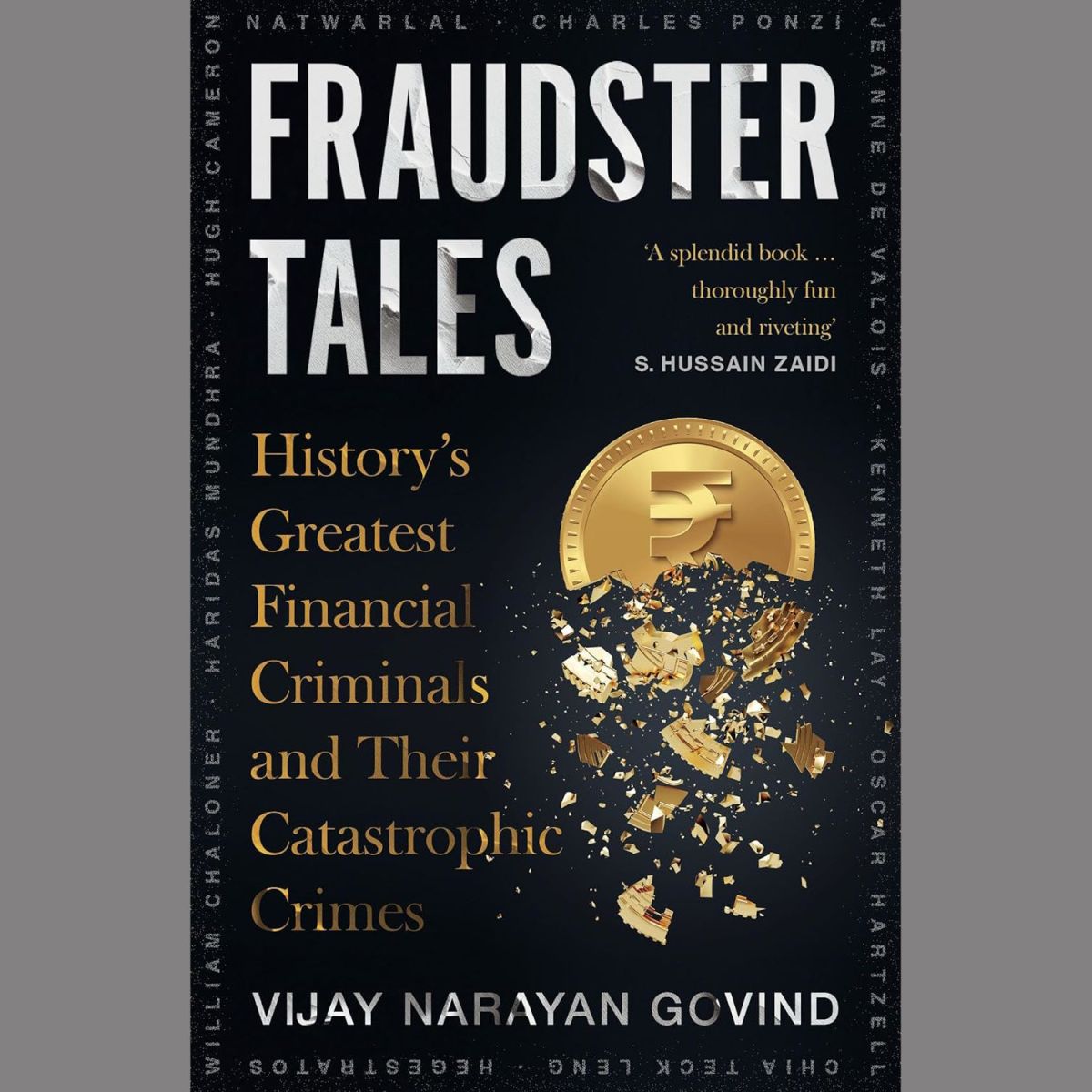If studied closely, retail is fascinating phenomenon, especially the ways in which retail business has grown and evolved in the last few decades. Grand old-world bazaars, supermarkets, departmental stores, streetside weekend markets, swanky air-conditioned shopping malls and online shopping behemoths like Amazon – retail business has many avatars, each with its own set of strengths and weaknesses, its own different USP. In recent years, consumers have pivoted towards the sheer convenience and cost savings that online platforms like Amazon offer, upending the hitherto accepted norms of retail business. Other companies – most notably Walmart – aren’t giving up the fight and are taking on Amazon with all their might. It’s a battle that Professor Nirmalya Kumar has written about in his new book, Clash: Amazon vs Walmart. Kumar, now a Professor of marketing at Singapore Management University and Distinguished Fellow at INSEAD Emerging Markets Institute, has earlier worked with Tata Sons, heading strategy as a member of the Group Executive Council there. He has taught at the Columbia University, Harvard Business School, IMD Switzerland and Northwestern University, Kellogg School of Management.
‘Amazon and Walmart, with more than half a trillion in revenues annually, are the two largest companies in the world. They have not only redefined the retail industry—Walmart in the 1980s/1990s and Amazon since 2000—but have also been the benchmark for business best practices (e.g., the use of IT, supply chain, data analytics, customer orientation). By examining these two companies and their business models in depth, Professor Nirmalya Kumar elucidates on the more general phenomenon of incumbents competing with disruptors (e.g., Volkswagen vs Tesla, Marriott vs Airbnb) as well as the move to omnichannel retail where physical stores must coexist with online retailers,’ says the publisher’s note, about Clash. For anyone interested in the retail business, how things work in the 21st century and future directions for retail, Clash is a fascinating read, a deep-dive into the granular details of modern-day retail.
With the publisher’s permission, here is an excerpt from Clash: Amazon vs Walmart
Beginning from humble origins in Bentonville, Arkansas, Walmart began putting large physical stores with discounted prices into little one-horse towns like Retailville, which everyone else was ignoring. Walmart’s ‘one-stop shop’ approach enticed many townspeople, who were drawn to the promise of finding everything they needed under one roof. The existing retailers, especially mom-and-pop stores, began to feel the heat as customers diverted their attention and wallets to Walmart. Just as Walmart seemed to have become unstoppable, a new entity, Amazon, emerged. Amazon, whose digital marketplace offered a wide array of products delivered right to customers’ doorsteps. With the convenience of online shopping and an ever-expanding selection, Amazon quickly gained popularity among the townspeople.
As time went on, the shopkeepers noticed a change in their foot traffic. Once-bustling streets grew quieter and the jingle of the cash registers became less frequent. The allure of the giants’ convenience and competitive prices proved irresistible to many, and the retailers found themselves struggling to keep up. Could the town of Retailville thrive, not by competing on the giants’ terms, but by nurturing the spirit of community and personal touch that made local businesses an indispensable part of the town’s identity? Moreover, could the remaining larger retailers prevail in the face of seemingly insurmountable challenges through innovation, exceptional customer experience and distinctive propositions? Or should they find solace in the rise of the omnichannel shopper? Were Amazon and Walmart themselves headed towards an unavoidable fatal confrontation, where only a single winner would emerge from the clash?
With sales of $611 billion in 2022, Walmart continued its dominance as the world’s largest company by revenue, a position that it first achieved in 2002. In contrast, the e-commerce pioneer Amazon, founded only in 1997 and with revenues of $514 billion in 2022, became, for the first time, the world’s second-largest corporation. The surge in online shopping over 2020–21, on account of the COVID-19 global pandemic, had enabled the e-retailer to considerably shrink the gap from Walmart. Although Walmart led Amazon in revenues as well as in operating income (at $20.4 billion versus Amazon at $12.2 billion) in 2022, on 17 November 2023, Amazon’s $1.5 trillion valuation dwarfed the $418 billion market capitalization of Walmart.
One can imagine that despite higher sales and profitability than Amazon, Walmart’s market cap being less than a third of Amazon’s market cap is a source of frustration to Walmart’s top management. The perceived market ‘disrespect’ is symbolic of a larger narrative, where traditional incumbent firms are not considered as ‘sexy’ as new-age disruptors, even when the latter have lower revenues and marginal, if any, profitability. Think Tesla or Uber versus the incumbent automakers and car rental companies as well as Airbnb or OYO versus leading hotel chains. However, the ‘age of the unicorns’ (start-ups with billion dollar-plus valuations) is a relatively recent phenomenon. Prior to 2003, even successful digital disruptors like Google did not command such valuations as private companies. Therefore, Amazon versus Walmart has great resonance for incumbents in general as they confront the challenge of digital transformation and combat new entrants with disruptive business models. Often, incumbents view these new business models with suspicion.
As the two most successful retailers in history, Amazon and Walmart have transformed the retail industry by redefining customer orientation, supplier-retailer relationships and the use of information technology. Both retailers have leveraged their tremendous power over suppliers to offer the lowest prices possible to consumers. Historically, the two firms did not compete directly against each other because of their differing focus. While Walmart dominated the ‘slow-growing’ brick-and mortar retail that comprised approximately 85 per cent of the US retail industry, Amazon led the ‘fast-growing’ e-commerce sector that contributed the remaining 15 per cent in 2022. Over the years, the two firms had optimized contrasting business models to enable their dominance of offline and online retailing, respectively. Walmart’s model was based on offering the lowest prices on everyday goods for its in-store shoppers through a vast store network. The retailer had redefined supply chain practices and lowered system costs by developing strategic partnerships with its largest suppliers and leading the adoption of information technology. In contrast, Amazon’s online model was based on offering the convenience of shopping from anywhere, anytime. It focused on developing a user-friendly platform that comprised a 600-million-plus product catalogue and a widespread and reliable fulfilment infrastructure to deliver orders quickly. The success of these two retailers was reflected in the fact that in 2022, 95 per cent of all US consumers had shopped at a Walmart store while 71 per cent had shopped at Amazon.
However, the growing consumer preference for omnichannel retailing, an integrated experience that seamlessly comprised digital and physical retail, compelled the two companies to make substantive investments in developing capabilities and acquiring resources in what was hitherto the other’s domain. Since 2015, Walmart increasingly reduced its spending on opening new stores, and instead, focused more on e-initiatives that facilitated online retail, such as the launch of pick-up towers, expansion of grocery delivery locations, adoption of technology and a supply chain that supported an omnichannel model, besides remodelling existing stores to make them more attractive to shoppers. This was followed by a $18 billion acquisition of India’s leading online retailer, Flipkart, in 2018. As a result of these efforts, Walmart became the leading competitor of Amazon in online sales in the US.
Concurrently, Amazon started investing in creating an offline presence by establishing a variety of access points to provide shoppers with a physical browsing experience. Between 2015 and 2021, it opened twenty-four bookstores across the US. It also rolled out eighty-seven pop-up stores/kiosks, which housed an assortment of Amazon hardware products. However, the pop-up concept did not resonate with customers and the company decided to discontinue them. By 2022, Amazon decided to concentrate on Whole Foods Market, Amazon Fresh (food and groceries) stores and Amazon Style (apparel) stores, having generated $19 billion in revenues from its 500-plus physical stores in 2022. The battle between Amazon and Walmart is a bellwether for the retail industry.
Clash: Amazon vs Walmart
Author: Nirmalya Kumar
Publisher: Penguin India
Format: Hardcover / Kindle
Number of pages: 272 / 272
Price: Rs 556 / Rs 528
Available on Amazon
Book Excerpt: Clash – Amazon vs Walmart









